Cutting into tallow: A lipidomic exploration of animal-based and alternatively sourced meat
Using the SCIEX 7500 system
Robert D. Lorenzo1, Megan Danielewicz2 and Mackenzie Pearson2
1SCIEX, Canada; 2SCIEX, USA
Abstract
Alternative meats are becoming very common in grocery stores and restaurants as concerns of global climate change are on the rise. While these products are based on other sources of proteins, lipids play an important role in these products as they contribute to taste and texture. Here, 5 different types of meat and alternatively sourced protein-based meat were analyzed for their lipid profiles using a global targeted lipid profiling method. In a single method, over 1000 lipid species were quantified, and significant differences were observed allowing markers of protein source and animal diet to be determined.
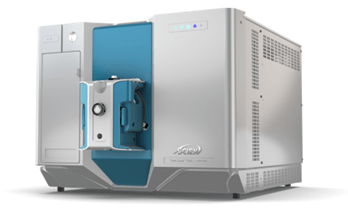
Introduction
Alternatively sourced meat has been available at the grocery store in many forms for several years. Black bean “burger” patties or tofu “turkey” have been choices of protein sources for consumers, but with the rising concern about global climate change, the call for more sustainable sources of protein is increasing. Since 2019, the retail sales of plant-based meat alternatives have grown 27%1, as these alternatives to meat are readily available at popular fast food chains, restaurants and local grocery stores.
In addition to their protein source, many factors define these alternatives to meat products besides just another source of protein. Synthetic biology companies investigate the smell, mouthfeel and visual qualities of their plant-based products. The taste and texture provide the consumer with an overall experience that is similar to the experience of eating meat. Fats, from either a single vegetable oil or from several sources, are often added to develop the flavor profile of the meat alternative. Depending on the source, however, the added fats may have beneficial or harmful effects on consumers’ health.2
Here, the lipid profiles of 5 different types of meat and meat alternatives were analyzed for their lipid profiles. Using the global lipidomic profiling method3, over 2000 lipids were screened and then narrowed down to quantify over 1000 lipid species in a single injection. A total of 21 lipid classes were monitored for this study, with the changes in carbon length composition, fatty acid composition and degree of desaturation are reported for select classes. The final lipid panel enabled clear differentiation between animal-based meat and meat alternatives (Figure 1).
Figure 1. Supervised PCA analysis of various meat and alternative meat products. PC1 vs. PC2 loading plot shows clear differentiation between meat and alternative meat products. Biological replicates cluster tightly, highlighting the reproducibility of the method. Differentiation can also be seen between the various alternative meat products.
Key features of lipidomic profiling in meat and alternatively sourced meat
- High-throughput lipidomic profiling method that provides a customizable MRM list that can be adapted based on matrix of interest or lipid class, such as oxidized lipids
- High sensitivity detection using the SCIEX 7500 system
- Enables user to profile and quantify changes in lipid profiles before and after cooking (Figure 1)
- Method can be utilized to report changes in chain length composition, fatty acid profiles and degree of desaturation by lipid class
- Enables users to identify potential markers for animal diet type in beef samples or added oils in meat alternative samples
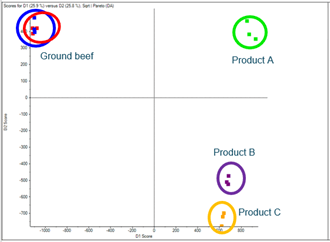 Click to enlarge
Click to enlarge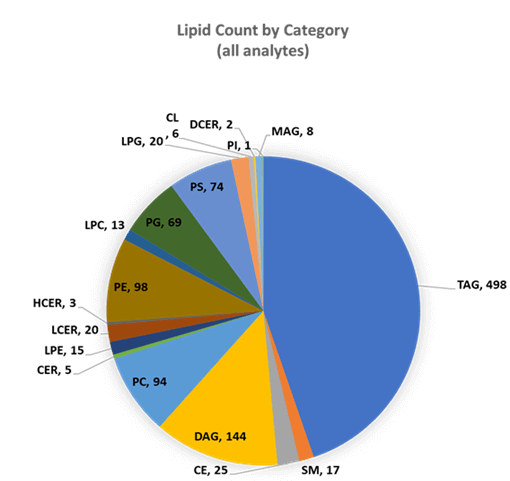 Click to enlarge
Click to enlarge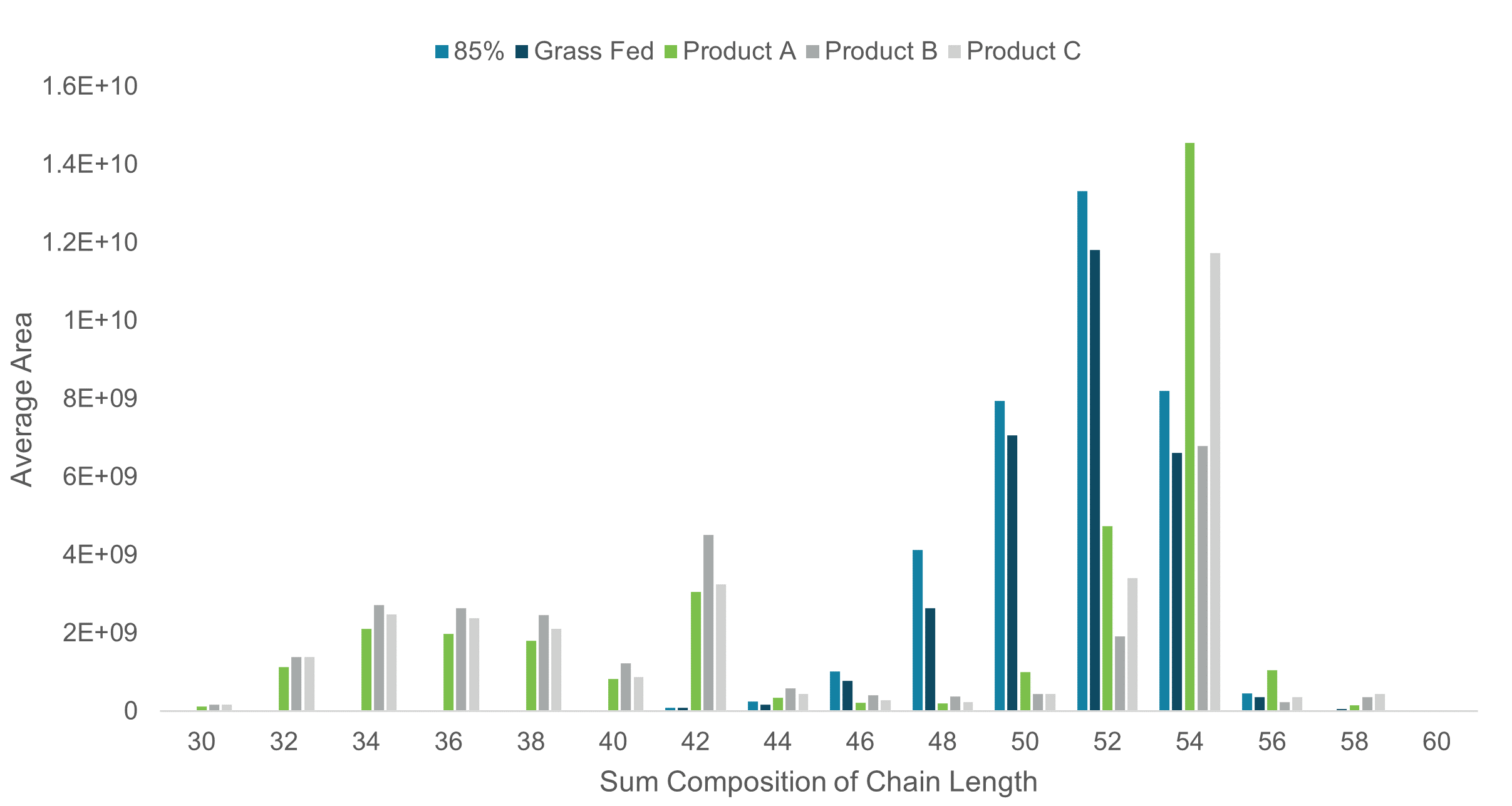 Click to enlarge
Click to enlarge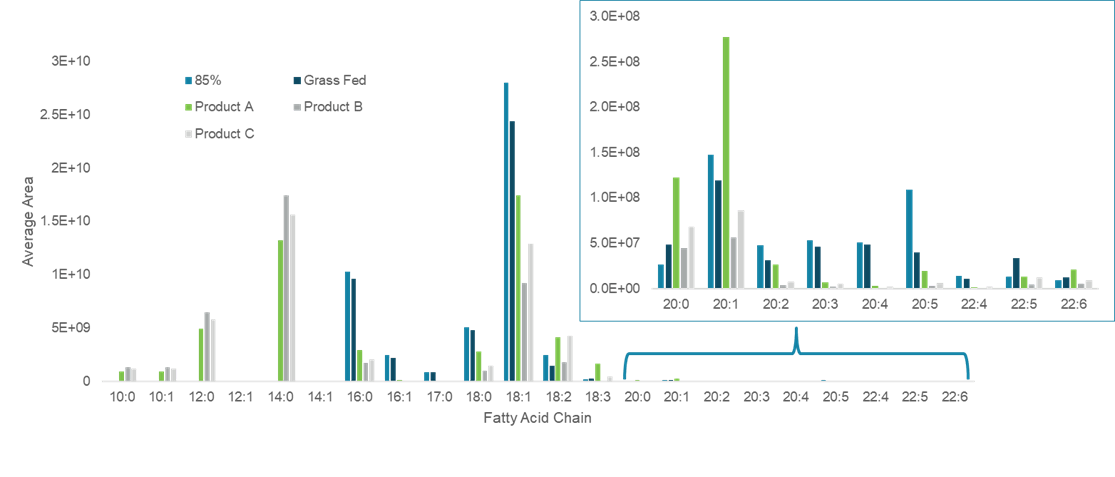 Click to enlarge
Click to enlarge Click to enlarge
Click to enlarge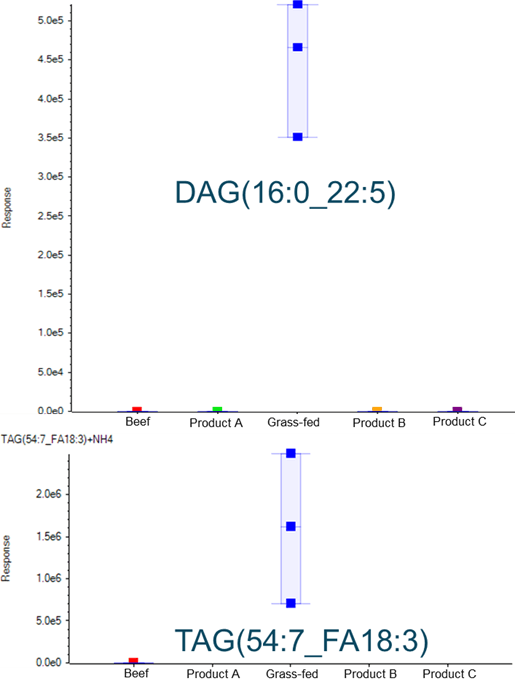 Click to enlarge
Click to enlarge